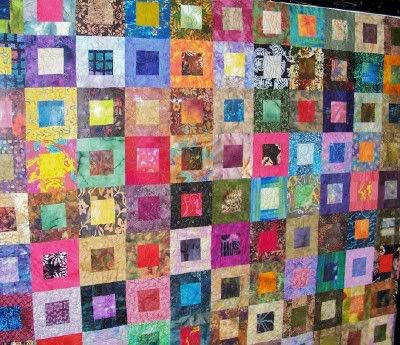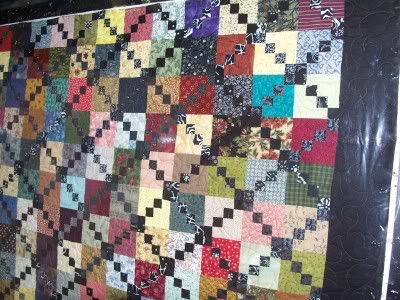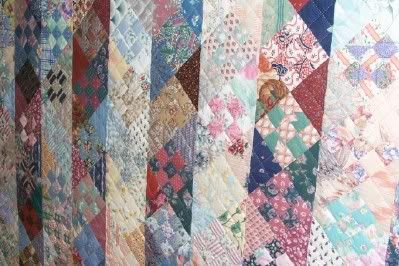
My second example is a 4 patch quilt. Easy, easy, easy and seems to work with nearly anybody's stash. Just takes a little planning ahead of time. Very popular design ever since the book Nickel Quilts came out. You don't have to use 5 inch squares or scraps. Your fabrics do need to coordinate a bit. This also works with novelties provided you have a very contrasting fabric for the diagonals such as featured in this example. The actual block consists of 2 squares with 2 4 patches using the same fabric. Here's a link to a double 4patch pattern. Note that the quilt example aligns the dark squares differently.
http://www.quiltwith2sissies.com/freedble4patch.htm

This last quilt is more traditionally used for using up scraps. It is a 9 patch on point with triangles making up the remainder of the block. Although it appears they are set in vertical strips, this quilt consists of rows of 1/2 square triangles alternating with 9 patches. Setting it on point gives a different visual orientation, particularly if you plan where your darks are located. This would be a great quilt to use up leftover solids either in the half squares or in the 9 patches. Another example I've seen recently uses the same two fabrics in all the half square triangles which gives another effect. Finally, you can use solid squares instead of 1/2 square triangles for yet another effect.
